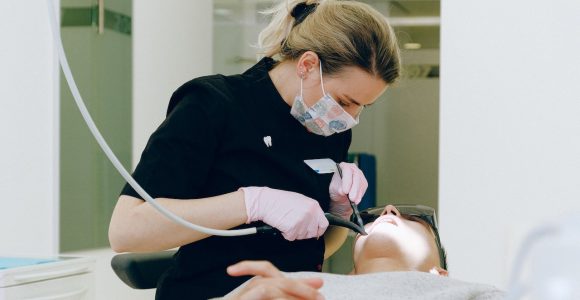Upcoming tooth extraction?


There are many reasons why a tooth (or some teeth) may need to be removed from a patient’s mouth. Most commonly these can be attributed to tooth decay, gum disease or injury. Possibly for one reason or another, you have been unable to receive the dental care you need and so a build up of bacteria has resulted in tooth decay occurring. You may have one of several medical conditions which can be linked to gum disease, or you possibly have gum disease without this medical history. Maybe you have exhausted all other treatment options and the only option left for you is to have your tooth (or teeth removed).
While decay and gum disease are the most common reasons for tooth extraction, there are other situations that may lead a dentist to recommend removal. Some people are born with extra teeth that crowd the mouth, and extracting them can prevent alignment problems down the road. Wisdom teeth often need to be pulled if they erupt partially or at an angle that impinges on adjacent teeth. Severe trauma from an accident can damage a tooth so extensively that it cannot be saved. Orthodontic treatment sometimes requires extracting teeth to create space. Additionally, a dentist may recommend tooth extractions in case of a large cavity or crack that cannot be restored, if gum recession has loosened a tooth, or if a serious infection develops that does not respond to root canal therapy. Ultimately, it is a last resort when other attempts to save the tooth have failed.
Whatever situation you find yourself in, a dentist is always willing to discuss your needs with you and see what they can do to help you.
What can be done about missing teeth?
It is common knowledge that there are a few possible options for replacing missing teeth. But the replacement depends on the tooth in question. Your dentist might advise against opting for an implant if you’ve undergone wisdom teeth removal, but there might be viable options for other teeth. The one that is most suited to you can only be assessed with your personal history in mind. It is also necessary for the mouth and teeth to be fully examined by a qualified dentist who then should be able to advise you on options tailored to your needs.
Temporary (removable) replacements may come in the form of bridges or dentures. These can be used in multiple circumstances, including where only one tooth is missing, or where there are multiple teeth missing. A more fixed alternative (where appropriate) is the use of dental implants in Plymouth. It may be that as a result of your examination and consultation, your dentist recommends following this avenue for your treatment.
What are dental implants?.
Dental implants are a long-lasting solution to missing teeth. They are made up of three parts. A titanium screw which is screwed or tapped into the jawbone where the root of the missing natural tooth should normally reside. A metal rod, also known as an abutment, which is inserted into this screw. Thirdly, a crown, bridge or denture can then be bonded to the abutment depending on the amount of missing teeth and the needs or preferences of the patient.
Maybe you are wondering if this is a premature thing to be considering when you are yet to have your tooth (or teeth) extracted. Be assured, that is not the case! In certain situations the titanium screws of the dental implants can be inserted during the surgery to remove the natural tooth. If this is the route which you decide to take (along with your dentist) there will then be a break in treatment to allow time for healing to progress around the screws. Where injury is the cause of the upcoming extraction, dental implants could be beneficial due to the screws being inserted into the jawbone. This can be known to support healing in the area, and also to help the titanium screws to embed in such a way that they can act as an anchor for the other elements of the dental implant.
Dental implants can also be advantageous due to their stable feel. This can help to prevent slipping and also improve comfort, alongside promoting increased confidence in eating and conversing with others. The visible aspect of the implant can be tailor made to fit around a patient’s remaining natural teeth, reducing the likelihood of damage occurring to these during the fitting process. They can also be adapted to closely match the shape and/or colour of the remaining natural teeth, in order to help prevent them from noticeably standing out.



